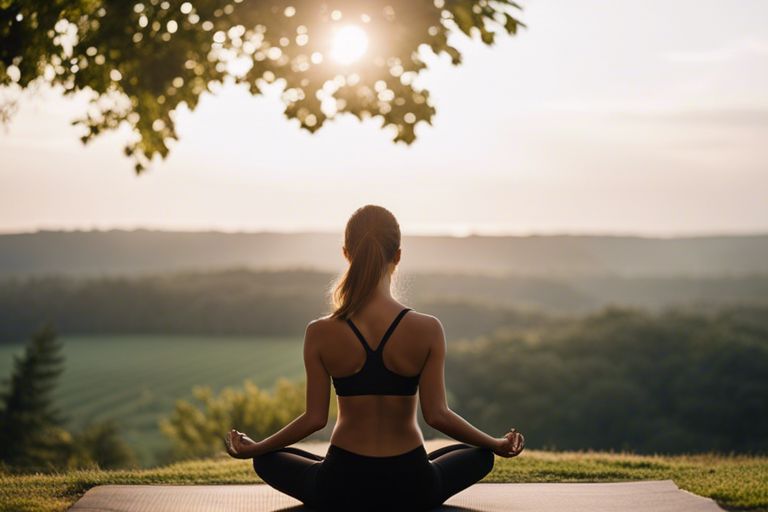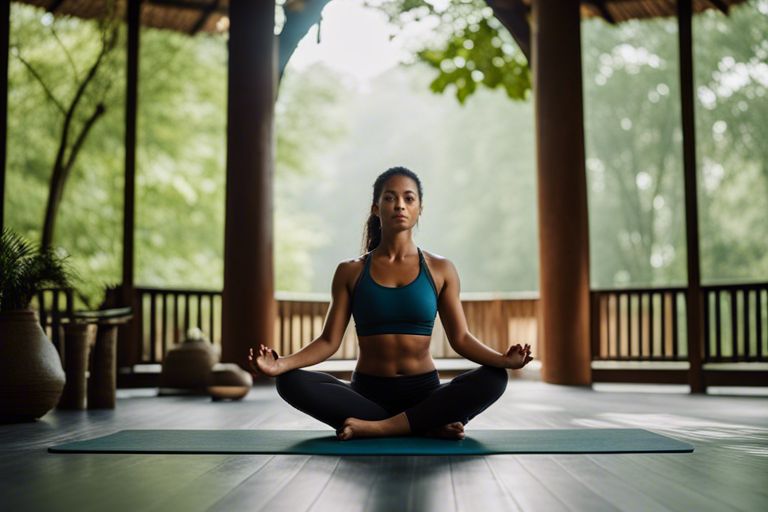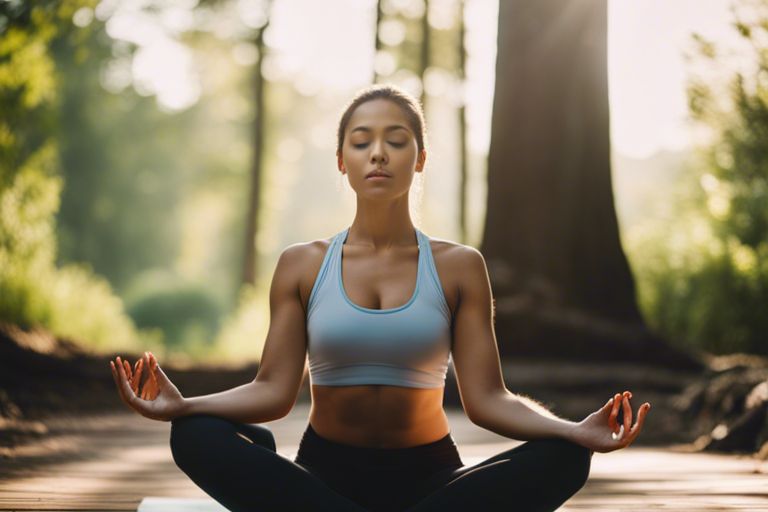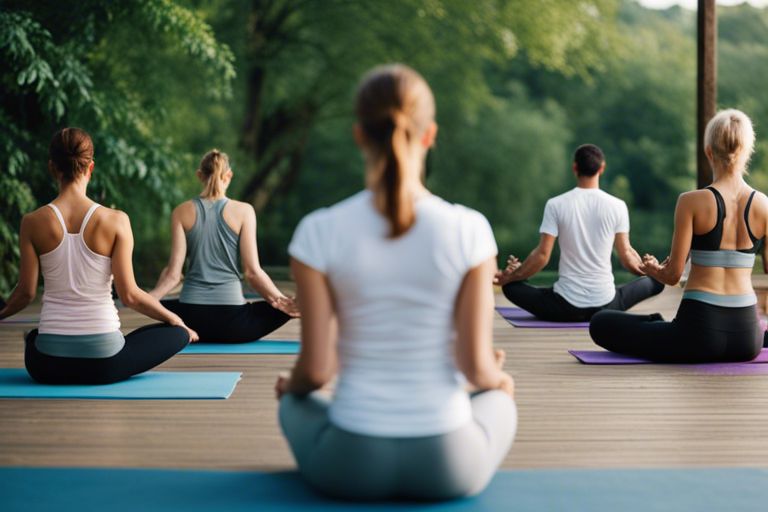There’s no rush when it comes to incorporating slow yoga practice into your routine. Begin by creating a calm environment with soothing music and dim lighting. Focus on your breath and mindful movement as you gently stretch and flow through each pose. Remember that progress takes time, so listen to your body and be patient with yourself. With this step-by-step guide, you’ll be on your way to a relaxing and rejuvenating slow yoga practice in no time.

Key Takeaways:
- Start with gentle warm-up: Begin your slow yoga practice with gentle movements to warm up your body and prepare it for the practice ahead.
- Focus on breath and mindfulness: Throughout your slow yoga practice, pay attention to your breath and cultivate mindfulness to deepen your practice and calm your mind.
- Listen to your body: It’s important to listen to your body’s cues and modify poses as needed to prevent any discomfort or injury during your slow yoga practice.

Preparing for Your Slow Yoga Journey
Understanding the Benefits of Slow Yoga
While you may be eager to jump into your slow yoga practice, it’s important to take a moment to understand the benefits it can bring to your life. Slow yoga focuses on gentle movements, deep breathing, and mindfulness, all of which can help you relieve stress, improve flexibility, and promote overall well-being. By slowing down and connecting with your breath, you can reduce anxiety and calm your mind.
Setting Realistic Expectations and Goals
An important aspect of starting your slow yoga journey is setting realistic expectations and goals for yourself. It’s easy to get caught up in wanting to achieve advanced poses or immediate results, but remember that progress in yoga takes time and consistency. Some poses may feel challenging at first, but with practice, you will notice improvements in your strength, flexibility, and mental clarity.
Some tips to set realistic expectations and goals include listening to your body, honoring where you are in your practice, and focusing on the journey rather than the destination. Be patient with yourself and celebrate small victories along the way.
1. Find a quiet, comfortable space for your yoga practice.
2. Sit or lie down and focus on your breathing.
3. Begin with gentle stretches for your body.
4. Slowly transition into basic yoga poses.
5. Hold each pose for a few breaths, focusing on relaxation.
6. End your practice with a brief meditation or relaxation.
Choosing the Right Environment for Your Practice
There’s nothing quite like practicing yoga in a space that promotes peace and tranquility. In order to fully immerse yourself in your slow yoga practice, it’s important to create an environment that fosters a sense of calm and relaxation.
Tips for Creating a Peaceful and Calming Space
- Choose a quiet room or corner in your home where you won’t be disturbed.
- Use soft lighting such as candles or dimmed lamps to create a soothing atmosphere.
- Play gentle music or nature sounds to enhance the peaceful ambiance.
Assume that by incorporating these elements into your practice space, you’ll be able to fully focus on your yoga and experience a deeper sense of relaxation.
Factors to Consider When Selecting a Yoga Studio or Class
- Location and convenience
- Teacher’s experience and qualifications
- Class schedule and frequency
Choosing the right yoga studio or class can significantly impact your practice. Factors such as the studio’s atmosphere, the instructor’s teaching style, and the class schedule should all be considered when making your decision. The right environment can make a huge difference in your ability to relax, focus, and deepen your yoga practice.
Factors to Consider When Selecting a Yoga Studio or Class
- Ensure the studio is clean, well-maintained, and provides a peaceful atmosphere.
- Look for experienced instructors who can guide you safely through your practice.
- Consider the variety of classes offered and whether they align with your goals and preferences.
The peaceful environment and supportive community of a good yoga studio can help you stay committed to your practice and make progress on your yoga journey.
Building a Strong Foundation
All great things begin with a strong foundation. When starting a slow yoga practice, it is necessary to set a solid groundwork to support your journey towards wellness and mindfulness.
How to Choose the Right Yoga Style for Beginners
Now, let’s talk about how to choose the right yoga style for beginners. As a beginner, it’s important to select a gentle and slow-paced style like Hatha or Yin yoga to help you ease into the practice. These styles focus on holding poses for longer periods, allowing you to build strength, flexibility, and relaxation at your own pace.
Essential Props and Equipment You’ll Need to Get Started
Started! As you initiate on your slow yoga practice journey, there are a few necessary props and equipment you’ll need to enhance your experience and support your body. A yoga mat is a must-have to provide cushioning and stability during poses. Additionally, yoga blocks, straps, and bolsters can assist you in modifying poses and deepening your stretches.
Need some guidance on choosing the right props for your practice? Consider talking to your instructor or visiting a local yoga studio for recommendations tailored to your needs and preferences.

Getting Started with Your Slow Yoga Practice
Your journey begins with setting the foundation for your slow yoga practice. If you’re new to yoga, you may want to check out this helpful guide on How to Start a Yoga Practice (4 Steps) to familiarize yourself with the basics. Once you feel ready, it’s time to take the first step towards your slow yoga practice.
A Step-by-Step Guide to Your First Slow Yoga Class
Slow Yoga is all about creating a mindful and gentle practice that focuses on relaxation and breathing. Here is a breakdown to guide you through your first slow yoga class:
| Step 1: Find a quiet and peaceful space to practice | Step 2: Start with gentle warm-up exercises to prepare your body |
| Step 3: Follow the instructor’s cues for slow and deliberate movements | Step 4: Focus on your breath and take your time with each pose |
Tips for Modifying Poses and Listening to Your Body
Slow Yoga allows you to listen to your body and make modifications as needed. Here are some tips to help you modify poses and tune into your body during your practice:
- Go at your own pace and avoid pushing yourself too hard
- Use props like blocks or straps to support your body in challenging poses
- Listen to any discomfort or pain and adjust or skip poses accordingly
The key is to honor your body during your slow yoga practice. Any discomfort or pain should not be ignored, and adjusting the pose or taking a rest is perfectly acceptable.
It is crucial to approach your slow yoga practice with mindfulness and awareness, making modifications as needed to ensure a safe and enjoyable experience. Be mindful of, any time you are unsure about a pose or sensation in your body, it’s always best to err on the side of caution and choose a gentler option.
To wrap up
With these considerations, you now have a solid foundation to start your slow yoga practice. Remember to listen to your body, start with basic poses, and gradually build up your practice. Incorporating mindfulness and breathing techniques will help you deepen your practice and enhance your overall well-being.
Starting slow is key to developing a sustainable yoga practice that you can continue for years to come. Be patient with yourself and celebrate your progress along the way. Enjoy the journey of self-discovery and growth that a slow yoga practice can bring into your life.
FAQ
Q: What is slow yoga practice?
A: Slow yoga practice involves performing yoga poses at a gentle pace, focusing on mindfulness, breath control, and relaxation. It allows for deeper stretches and greater awareness of the body and breath.
Q: How can I start a slow yoga practice?
A: To start a slow yoga practice, find a quiet and comfortable space, choose some gentle yoga poses or sequences, focus on your breath, move slowly and mindfully through each pose, and take time to relax and meditate at the end of your practice.
Q: What are the benefits of a slow yoga practice?
A: Slow yoga practice can help improve flexibility, reduce stress and anxiety, increase body awareness, enhance mindfulness, promote relaxation, and improve overall well-being. It can also be beneficial for people of all fitness levels and abilities.











